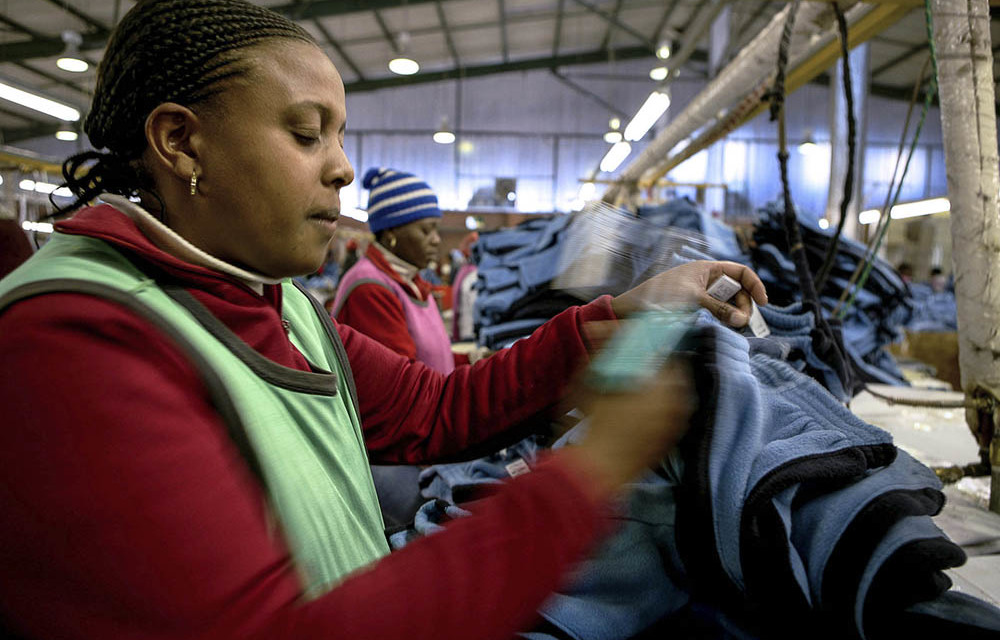
The textile industry is one of the important industries in South Africa.It employs around 80,000 people and provides important export goods, but textile pollution is a serious problem.
TThe textile industry is one of the important industries in South Africa. It employs around 80,000 people and provides important export products. However, textile pollution is a serious problem both regionally and across the continent.
Textiles are fabrics or clothing that are primarily composed of fibers. These fibers include synthetic fibers, man-made fibers, vegetable fibers, and animal fibers. For example, synthetic fibers include polyester, man-made fibers include rayon, which is made from trees, and plant-based fibers can be made from cotton or linen. Animal fibers may be derived from wool or silk, for example.
Clothing production is on the rise and is expected to reach more than 200 billion pieces worldwide by 2030.
So what's the problem? Disposing of these fibers is highly polluting. Much of it ends up in landfills. In 2022, approximately 1.1 million tons of waste was disposed of in landfills. Almost 7% of this was textiles, amounting to approximately 70,300 tons. By comparison, plastics make up just 200,000 tonnes of landfill waste. These figures do not include private landfills.
The fibers in these landfills emit methane, a harmful greenhouse gas that contributes to global warming. Additionally, dyes and chemicals in fabrics can leach into the soil and contaminate surface and groundwater.
Another problem is that fiber production requires large amounts of water. Wet fiber processing requires water. According to the Greenpeace report, wet textile processing includes pre-treatment, dyeing, printing, washing and finishing. This process uses 85% of the stock water in the textile supply chain.
According to a United Nations study, it takes about 8,000 liters of water to make a pair of jeans, which is equivalent to seven years of drinking water for one person.
With fashion evolving so rapidly, people are quick to throw away their clothes to keep up with trends. Perhaps this is a good time to remember that South Africa is a water-scarce country.
A further problem with this is that the polyester and other microplastics in these fibers find their way into the water. Inadequate water treatment allows microplastics to enter the water.
Microplastics are known to cause reproductive problems and liver stress in humans. The effects on aquatic life are well known and include drowning, strangulation, and suffocation.
Another Greenpeace report found that around 35% of primary microplastics in the ocean come from laundering synthetic textiles.
There is also the issue of climate. This industry accounts for 8% to 10% of global carbon emissions. Textiles shipped around the world require fossil fuels. Much clothing is also incinerated in landfills, further exacerbating atmospheric destruction.
The problem of textile contamination is clear, but what should we do?
The first step is to increase the recycling and reuse of textiles. Buying less fiber is also a solution. It is essential to buy as little clothing as possible.
The report by Elize Hattingh and Nicola Jenkin recommends:
Improve product durability, repairability, and recyclability. This can be achieved through careful selection of materials that increase longevity, durability, and repairability. Fibers need enhanced color and fabric resistance to increase longevity and durability. It is important to reduce the use of fibers and materials that are difficult to recycle.
Clothing should be multifunctional and fit for purpose. It must be repairable in the sense that it has accessories such as repair kits and buttons. Must be designed to be disassembled for reuse and recycling.
In order for the second-hand market to flourish, it is necessary to revitalize the second-hand market and increase its capacity. Vintage clothing can be repaired or refurbished to fit modern fashion.
A just transition needs to be introduced to reduce imports of textile products, allow for local formalization and decarbonisation, and ensure the industry does not suffer from job cuts. There needs to be a connection between recyclers and clothing manufacturers. There is scope for South Africa to lead the way on the continent and for the industry to create a thriving second-hand textile market.
Textile recycling rates are alarming and urgently need improvement.
There is scope for a circular economy to improve the industry. According to a study by the National Institute of Standards and Technology, this “circular economy approach aims to extend the life of textile products through reuse and repair and to keep used materials in the economy through recycling.”

